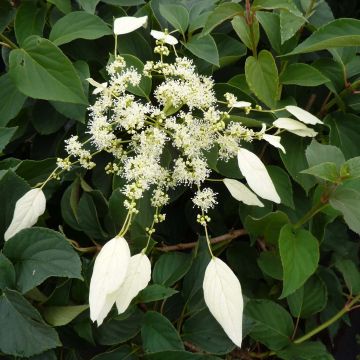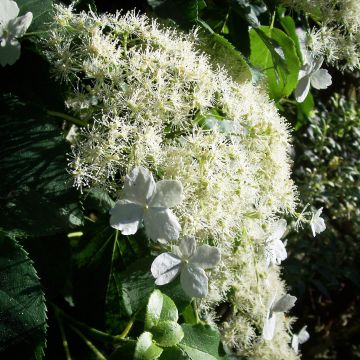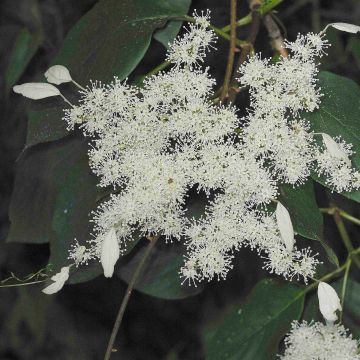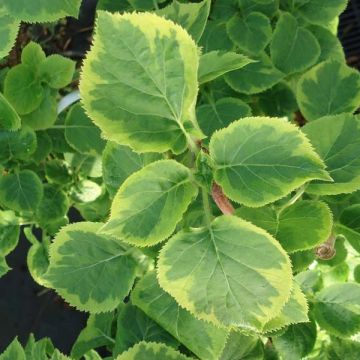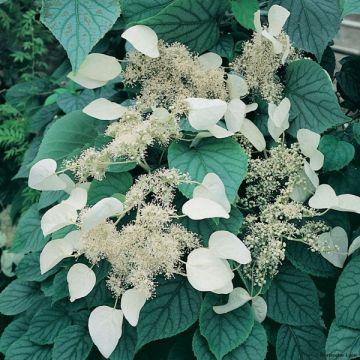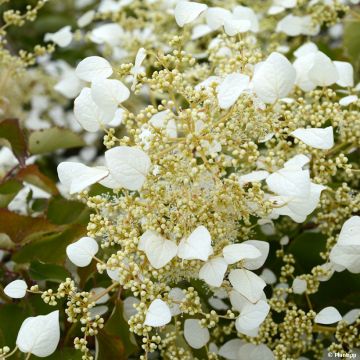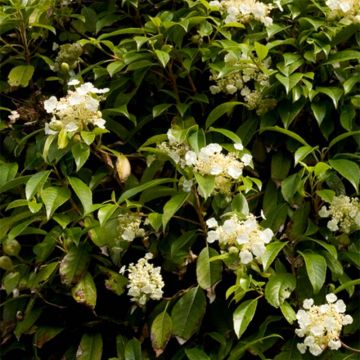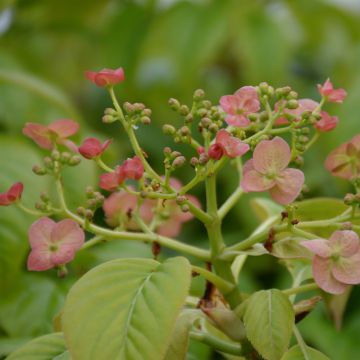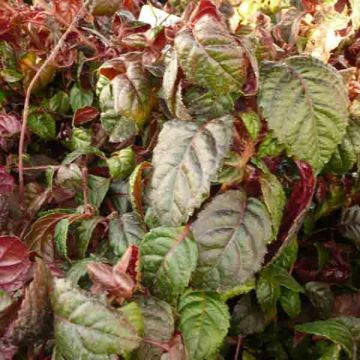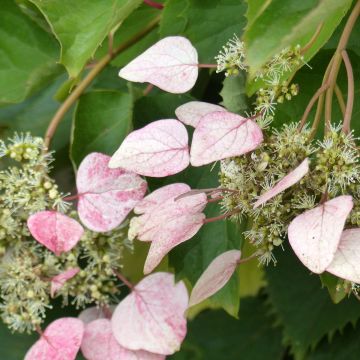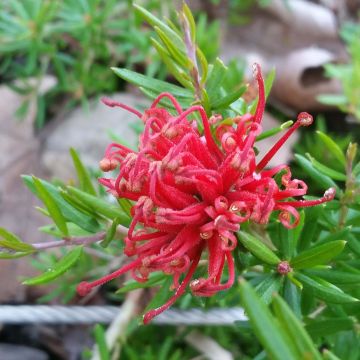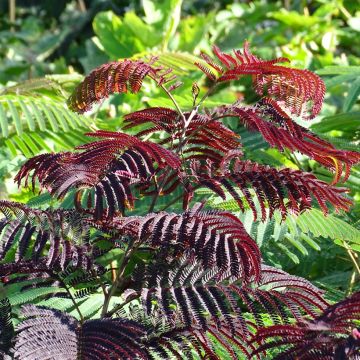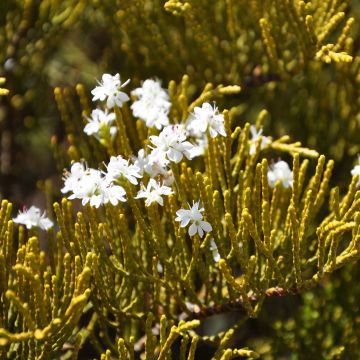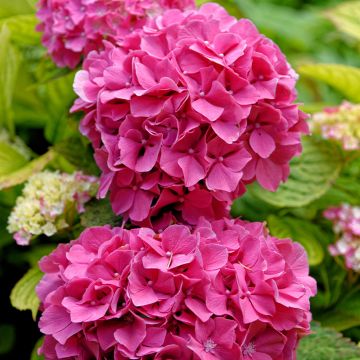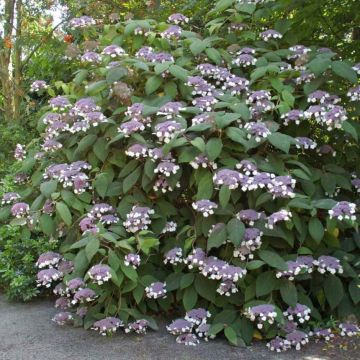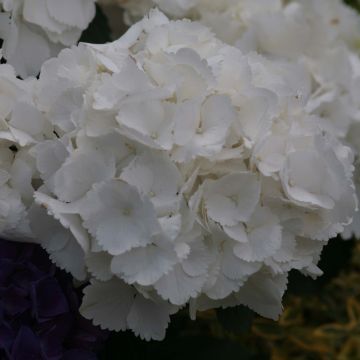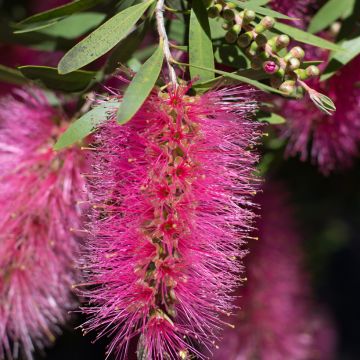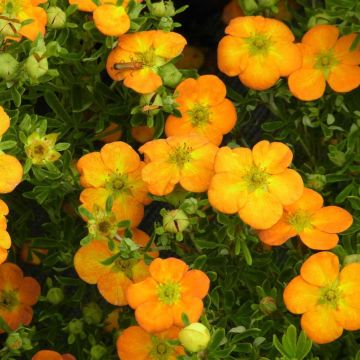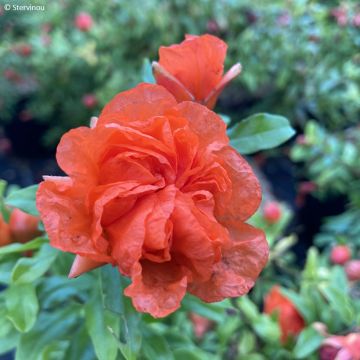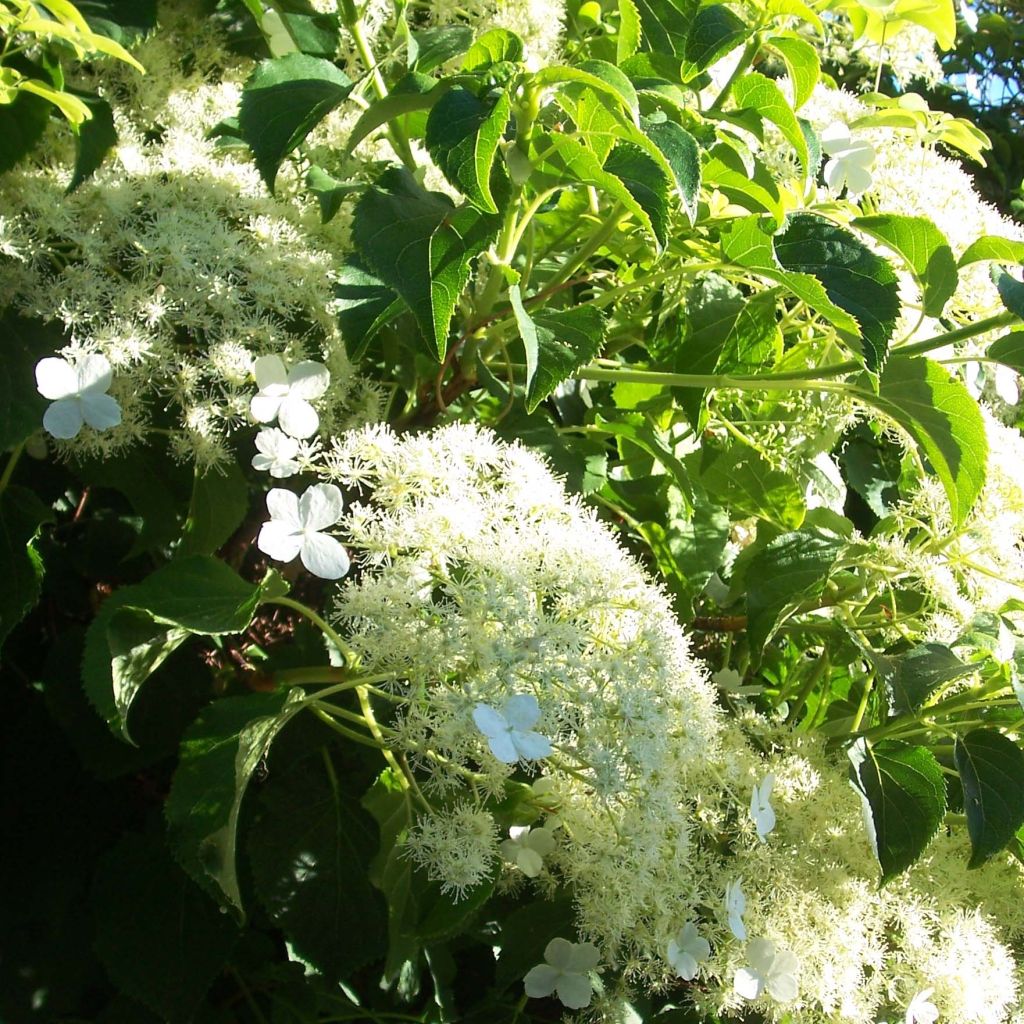

Hydrangea petiolaris Flying Saucer- Climbing Hydrangea
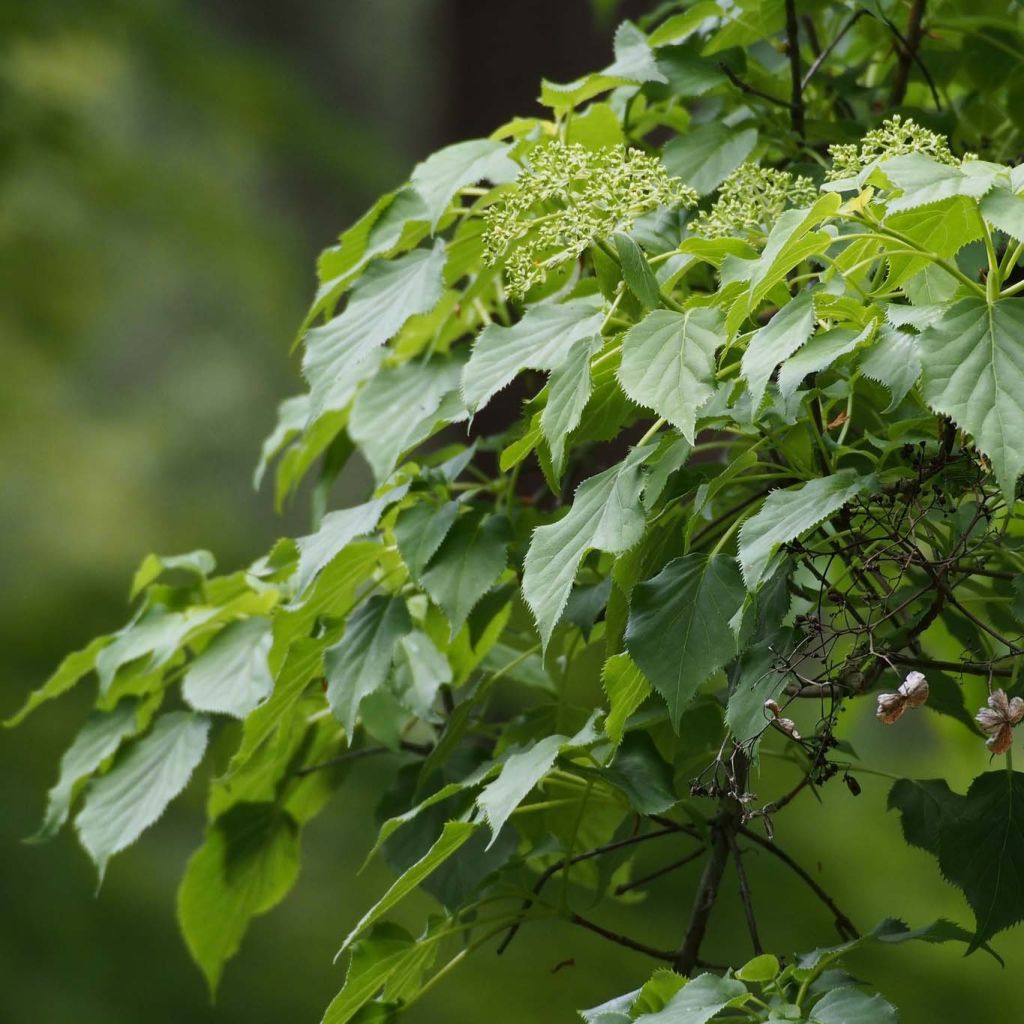

Hydrangea petiolaris Flying Saucer- Climbing Hydrangea
Hydrangea petiolaris Flying Saucer- Climbing Hydrangea
Hydrangea anomala sp petiolaris Flying Saucer
Climbing Hydrangea
This item cannot be shipped to the selected country
Delivery charge from €5.90
More information
Schedule delivery date,
and select date in basket
This plant carries a 6 months recovery warranty
More information
We guarantee the quality of our plants for a full growing cycle, and will replace at our expense any plant that fails to recover under normal climatic and planting conditions.
From €5.90 for pickup delivery and €6.90 for home delivery
Express home delivery from €8.90.
Does this plant fit my garden?
Set up your Plantfit profile →
Description
Hydrangea petiolaris 'Flying Saucer' is a variety of climbing hydrangea with umbels of white flowers which are larger, and more decorative, than those of the botanical species. The long and powerful stems of this deciduous bush use climbing roots to cling on to bare walls or bare trees, in the manner of ivy, transforming large spaces into buzzing curtains of bees in early summer. Although it sometimes takes 3 years to climb, it is a robust plant that will manage on its own once well established. Remarkably adapted to shaded situations, climbing hydrangeas are invaluable for their ability to decorate difficult areas.
Native to Japan and northeastern Asia, Hydrangea anomala subsp. petiolaris is a climbing bush belonging to the Hydrangeaceae family. In its natural environment, the forests of northeastern Asia, this woody plant grows up to 15m (49ft) in height, but it rarely exceeds 5 to 8m (16 to 26ft) in our climates. It is a very hardy plant (-25°C (-13°F)) that thrives in deep, rich soil, without excess limestone and not too dry. Its growth is slightly slow in the juvenile stage, while its roots anchor deeply in the soil.
The 'Flying Saucer' variety only differs in the increased size of its inflorescences. This vigorous plant produces woody, sturdy and well-branched stems, up to a minimum of 3 to 4m (10 to 13ft) in height, which have a very interesting architecture. With age, they crack, and their bark flakes off in spectacular shreds, giving the plant an attractive appearance even in winter. This creeping bush is a hardy climber that uses its climbing roots to cling. Without support, it will not exceed 1.5m (5ft) and will form a dense bush. The stems bear ovate leaves with pointed tips, measuring 8cm (3in) long by 3cm (1in) wide, finely dentate on the edges, and slightly rough to the touch. They are bright green on the top, lighter underneath, and turn yellow in autumn before falling off. This hydrangea blooms from late May to July depending on the climate, even in the shade. Its nectar-rich, flat, white flowers are arranged in large umbels reaching up to 30cm (12in) in diameter. Each one is composed of numerous fertile flowers with prominent stamens surrounded by a few larger sterile florets. They do not wither but dry slowly on the plant, adopting subtle green hues before turning brown.
'Flying Saucer' can be used in the background to cover a north-facing wall or dress up an old dead tree. It also proves to be an excellent ground cover. It pairs well with shrub fuchsias (magellanica) for example, or low-maintenance ground cover plants like Aegopodium podagraria 'Variegata', perennial Geraniums macrorrhizum, or periwinkles. It can be combined with a shade-loving Virginia creeper like Parthenocissus henryana and quinquefolia.
Report an error about the product description
Hydrangea petiolaris Flying Saucer- Climbing Hydrangea in pictures
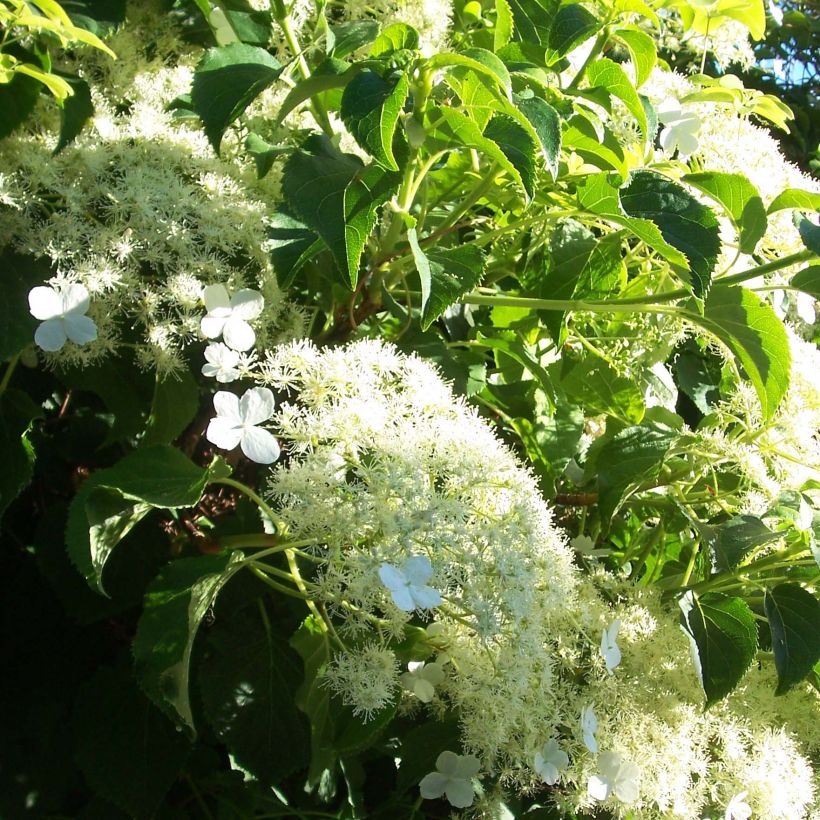

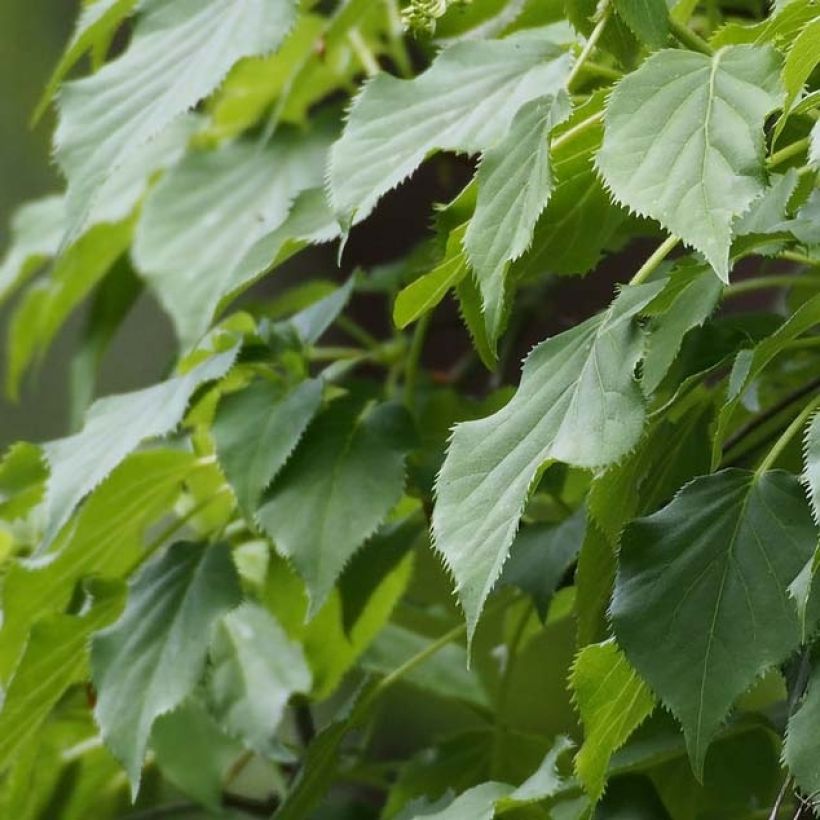

Plant habit
Flowering
Foliage
Botanical data
Hydrangea
anomala sp petiolaris
Flying Saucer
Hydrangeaceae
Climbing Hydrangea
Cultivar or hybrid
Other Climbing Hydrangea
Planting and care
Plant in a north or east-facing position, in deeply worked, well-loosened soil enriched with compost, and without excess limestone. If you plant in an east-facing position, remember to regularly water in the first years and especially in summer, as the plant will generally receive little water. A good base fertiliser (horn or dehydrated blood) will promote the growth of your plant and nourish it without the risk of burning. If your soil tends to be dry, incorporate some topsoil and compost into your garden soil, pour a watering can directly into the planting hole (to moisten the soil deeply), and provide a watering basin on the surface. You can mulch the base in summer to keep the roots cool, and water regularly if it is very dry. After a few years, this plant should be able to manage on its own in all regions. If pruning becomes necessary to limit its growth, it should be done at leaf fall. Remove faded inflorescences in autumn. Eliminate branches that grow perpendicular to the axis of the wall or poorly placed branches. Make sure the plant does not damage the roof or gutters.
Planting period
Intended location
Care
-
, onOrder confirmed
Reply from on Promesse de fleurs
Summer-flowering shrubs
Haven't found what you were looking for?
Hardiness is the lowest winter temperature a plant can endure without suffering serious damage or even dying. However, hardiness is affected by location (a sheltered area, such as a patio), protection (winter cover) and soil type (hardiness is improved by well-drained soil).

Photo Sharing Terms & Conditions
In order to encourage gardeners to interact and share their experiences, Promesse de fleurs offers various media enabling content to be uploaded onto its Site - in particular via the ‘Photo sharing’ module.
The User agrees to refrain from:
- Posting any content that is illegal, prejudicial, insulting, racist, inciteful to hatred, revisionist, contrary to public decency, that infringes on privacy or on the privacy rights of third parties, in particular the publicity rights of persons and goods, intellectual property rights, or the right to privacy.
- Submitting content on behalf of a third party;
- Impersonate the identity of a third party and/or publish any personal information about a third party;
In general, the User undertakes to refrain from any unethical behaviour.
All Content (in particular text, comments, files, images, photos, videos, creative works, etc.), which may be subject to property or intellectual property rights, image or other private rights, shall remain the property of the User, subject to the limited rights granted by the terms of the licence granted by Promesse de fleurs as stated below. Users are at liberty to publish or not to publish such Content on the Site, notably via the ‘Photo Sharing’ facility, and accept that this Content shall be made public and freely accessible, notably on the Internet.
Users further acknowledge, undertake to have ,and guarantee that they hold all necessary rights and permissions to publish such material on the Site, in particular with regard to the legislation in force pertaining to any privacy, property, intellectual property, image, or contractual rights, or rights of any other nature. By publishing such Content on the Site, Users acknowledge accepting full liability as publishers of the Content within the meaning of the law, and grant Promesse de fleurs, free of charge, an inclusive, worldwide licence for the said Content for the entire duration of its publication, including all reproduction, representation, up/downloading, displaying, performing, transmission, and storage rights.
Users also grant permission for their name to be linked to the Content and accept that this link may not always be made available.
By engaging in posting material, Users consent to their Content becoming automatically accessible on the Internet, in particular on other sites and/or blogs and/or web pages of the Promesse de fleurs site, including in particular social pages and the Promesse de fleurs catalogue.
Users may secure the removal of entrusted content free of charge by issuing a simple request via our contact form.
The flowering period indicated on our website applies to countries and regions located in USDA zone 8 (France, the United Kingdom, Ireland, the Netherlands, etc.)
It will vary according to where you live:
- In zones 9 to 10 (Italy, Spain, Greece, etc.), flowering will occur about 2 to 4 weeks earlier.
- In zones 6 to 7 (Germany, Poland, Slovenia, and lower mountainous regions), flowering will be delayed by 2 to 3 weeks.
- In zone 5 (Central Europe, Scandinavia), blooming will be delayed by 3 to 5 weeks.
In temperate climates, pruning of spring-flowering shrubs (forsythia, spireas, etc.) should be done just after flowering.
Pruning of summer-flowering shrubs (Indian Lilac, Perovskia, etc.) can be done in winter or spring.
In cold regions as well as with frost-sensitive plants, avoid pruning too early when severe frosts may still occur.
The planting period indicated on our website applies to countries and regions located in USDA zone 8 (France, United Kingdom, Ireland, Netherlands).
It will vary according to where you live:
- In Mediterranean zones (Marseille, Madrid, Milan, etc.), autumn and winter are the best planting periods.
- In continental zones (Strasbourg, Munich, Vienna, etc.), delay planting by 2 to 3 weeks in spring and bring it forward by 2 to 4 weeks in autumn.
- In mountainous regions (the Alps, Pyrenees, Carpathians, etc.), it is best to plant in late spring (May-June) or late summer (August-September).
The harvesting period indicated on our website applies to countries and regions in USDA zone 8 (France, England, Ireland, the Netherlands).
In colder areas (Scandinavia, Poland, Austria...) fruit and vegetable harvests are likely to be delayed by 3-4 weeks.
In warmer areas (Italy, Spain, Greece, etc.), harvesting will probably take place earlier, depending on weather conditions.
The sowing periods indicated on our website apply to countries and regions within USDA Zone 8 (France, UK, Ireland, Netherlands).
In colder areas (Scandinavia, Poland, Austria...), delay any outdoor sowing by 3-4 weeks, or sow under glass.
In warmer climes (Italy, Spain, Greece, etc.), bring outdoor sowing forward by a few weeks.

































